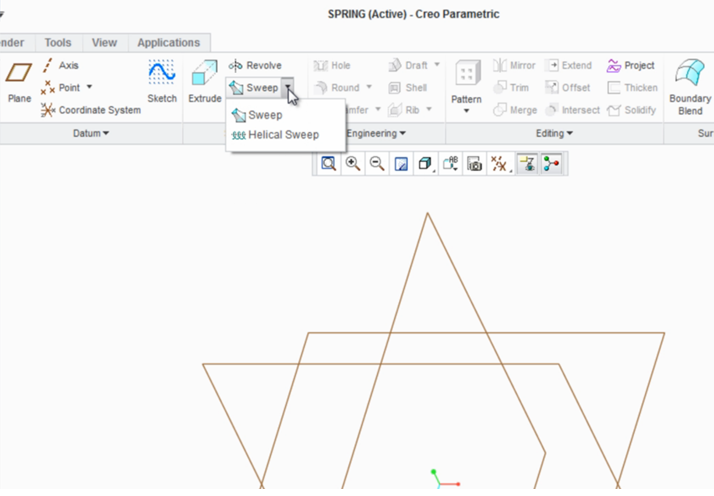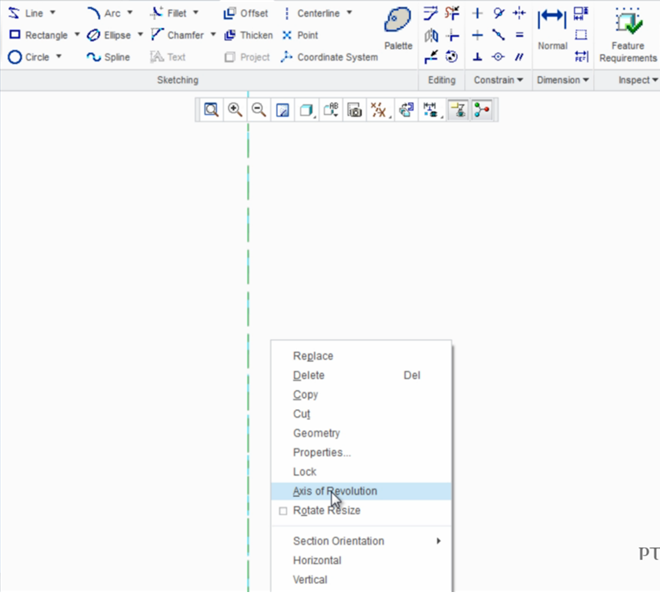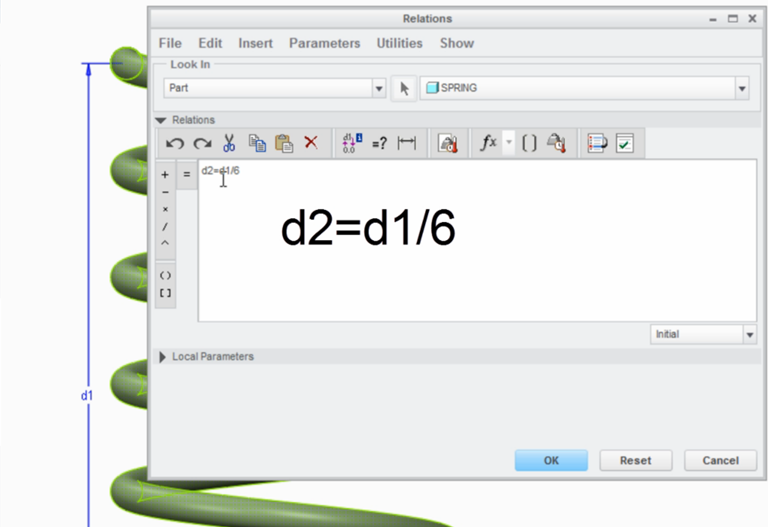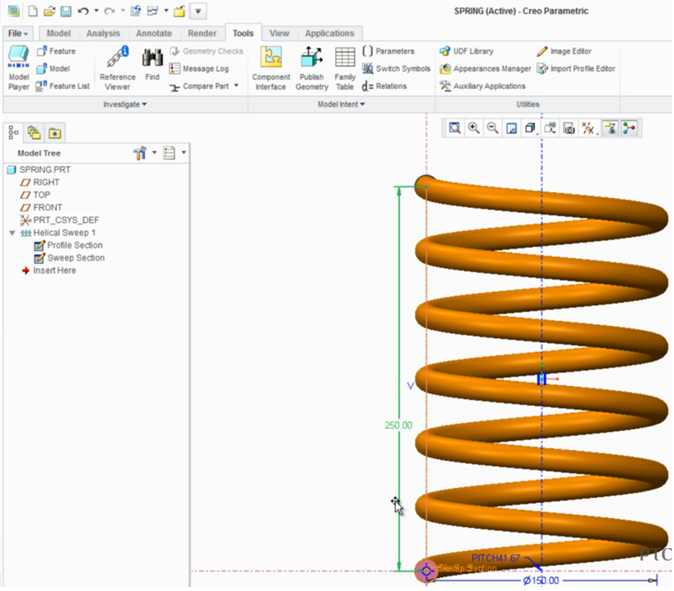We are aware of an issue causing pages to load incorrectly for some users and expect a fix soon. Sorry for the inconvenience.
- Community
- Creo+ and Creo Parametric
- Creo Parametric Tips
- Did You Know? Creating Helical Sweeps for Springs
- Subscribe to RSS Feed
- Mark as New
- Mark as Read
- Bookmark
- Subscribe
- Printer Friendly Page
- Notify Moderator
Did You Know? Creating Helical Sweeps for Springs
This week’s Did You Know, provided by our Director of Product Management Paul Sagar, teaches users how to create helical sweeps for springs using the sweep tool in PTC Creo Parametric. With this tool and its dashboard interface, creating springs is quick and easy. Paul shows us how to do so in three easy steps:
Step 1: Start Sketching the Spring’s Profile
The helical sweep tool is located in the Shapes group of the modeling tab, under the Sweep Type drop down.

The sweep type drop down menu
After the helical sweep dashboard opens, go into the References tab and click Define to begin sketching the profile of the spring.
In this example, we’re going to sketch the spring’s profile on the FRONT datum plane in a 2D orientation.
Step 2: Define Spring Properties
First, define the spring center line. This will be the center axis of the spring (the axis of revolution).

Defining the axis of revolution on the center line
Next, add a vertical line to the left of the center line to represent the profile of the spring. This will be the diameter of the spring defined through the center of the spring’s wire. Complete the profile sketch.
Now define the Helix section by choosing Create or Edit Sweep Section in the dashboard.
The diameter of the wire will be sketched at the start point of the profile, using a circle. But you can use any shape you need.
Step 3: Add Relations
The helical sweep dashboard makes it easy to edit the pitch value of the spring, or toggle the spring from a right hand to left hand turn. The finished helical sweep will be seen dynamically on the screen. Complete the feature.
To finish the spring however, we want to make sure the spring maintains six coils no matter how much it’s expanded or compressed. To do this, we’ll need to add a relation to the part.
 Adding relations to ensure this spring has six coils
Adding relations to ensure this spring has six coils
This relation will be used to control the spring’s pitch as it expands and contracts. Go to the Tools tab and open the Relations Dialog box. We can see that the height of the spring is D1, the pitch is D2, and the diameter is D0. We need to write a relation that says the pitch equals the height of the profile divided by 6. This will ensure that the spring always has 6 coils.
Now we can test it by editing the height dimension to compress and expand the spring.
 The final product: We can continue to compress and expand the spring without changing the number of coils
The final product: We can continue to compress and expand the spring without changing the number of coils
Check out our video tutorial on the PTC University Learning Exchange (“Creating Helical Sweeps for Springs”) to see this advice in action. We’d also love to hear your suggestions for working with helical sweeps below.
For more in-depth product feature explanations, visit our Tech Tips area.
Have some ideas about what PTC Creo product features you’d like to learn more about? Send me a message or leave a comment below and we’ll write up the best ideas from the community. Thanks for reading, looking forward to all of your feedback!
In case you missed it, here are our recent Did You Know posts:
1) How to Use Motion Skeletons to Quickly Design Mechanisms
2) Tips for Fewer Model Failures with Intent References
3) Tips for Creating Advanced Round Geometry in PTC Creo Parametric
- Mark as Read
- Mark as New
- Bookmark
- Permalink
- Notify Moderator
This is great and all, but springs don't usually have a constant number of turns as they stretch and compress, they have a constant wound-material length. They also don't keep a constant diameter if their ability to wind or unwind is restricted. You can see the difference by doubling the spring length - if the turns remain the same, where does the extra wire come from? Or take the spring from a retractable ball point pen and pull it.
If there was a PTC Helical Spring module that accounted for these characteristics, that would be a big help in avoiding sometimes costly design problems that simple helix features don't expose.
- Mark as Read
- Mark as New
- Bookmark
- Permalink
- Notify Moderator
You have a good point, David.
There are also many applications where a simple helix will never suffice.
In line with your thought, however, you could apply the perimeter measurement to the referenced spring in the document below:
Closed and Ground Spring - Alternative to Helical Sweep
You can go really wild and have it adjust the diameter of the tube as well.

